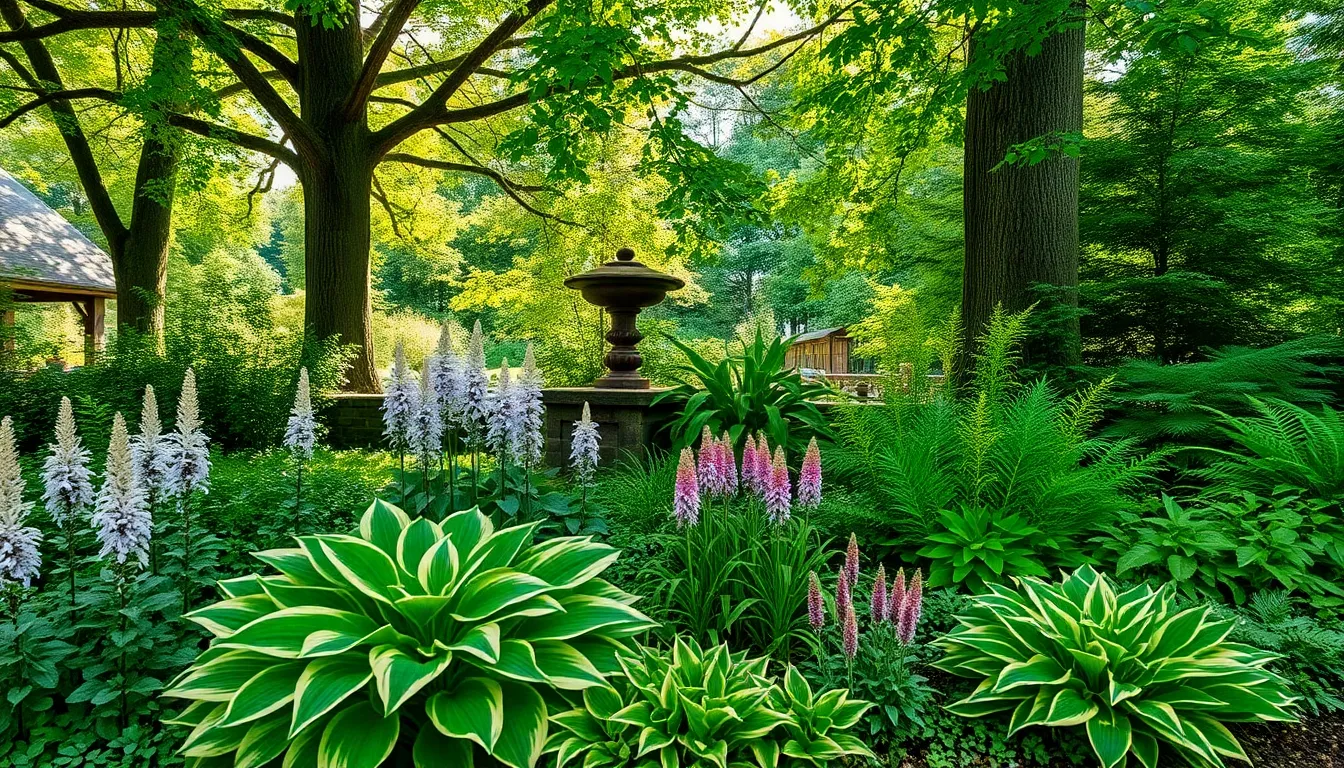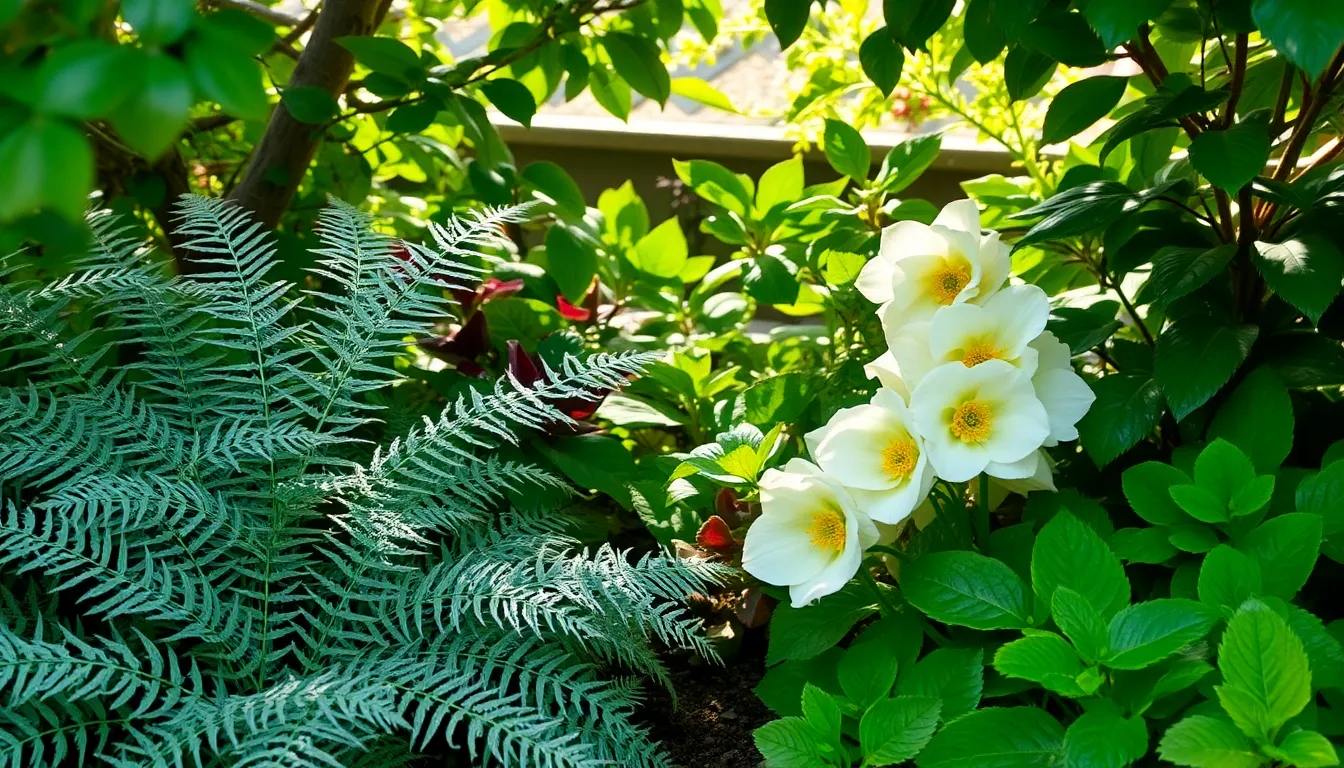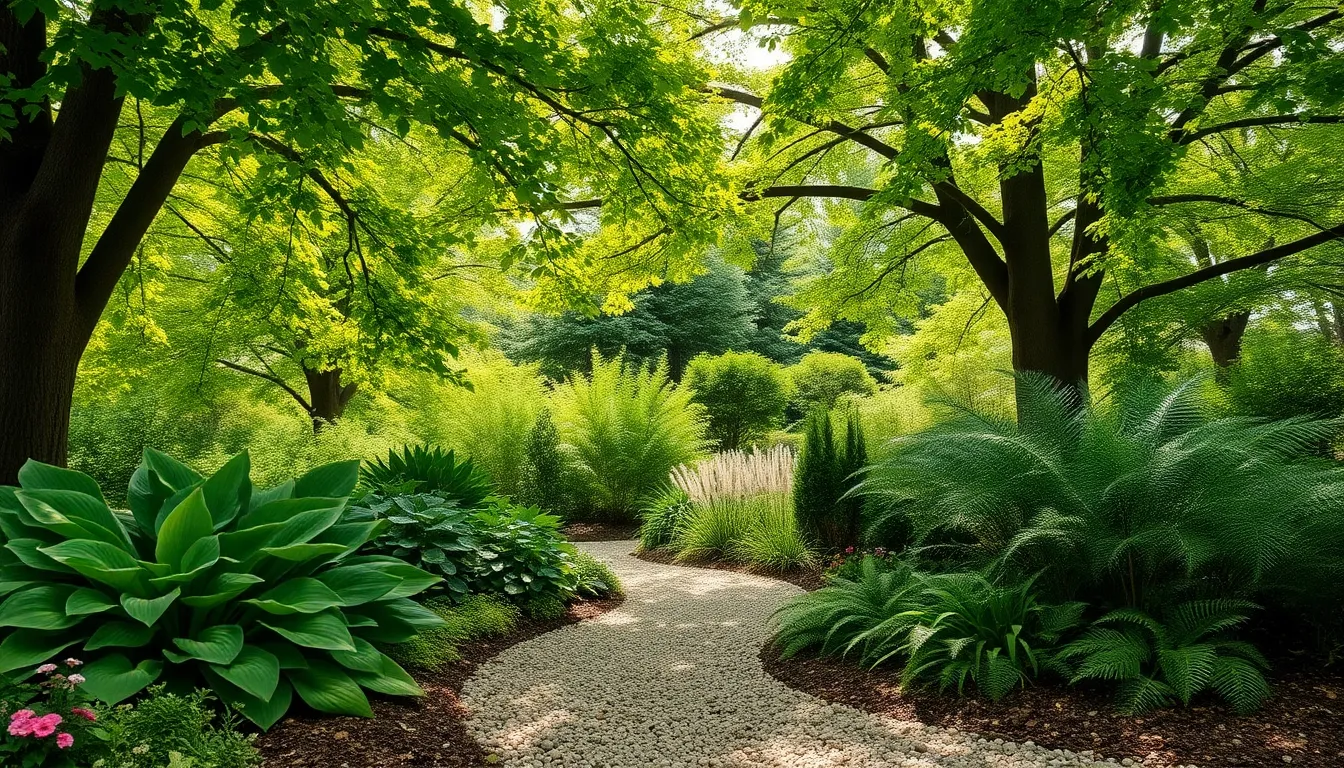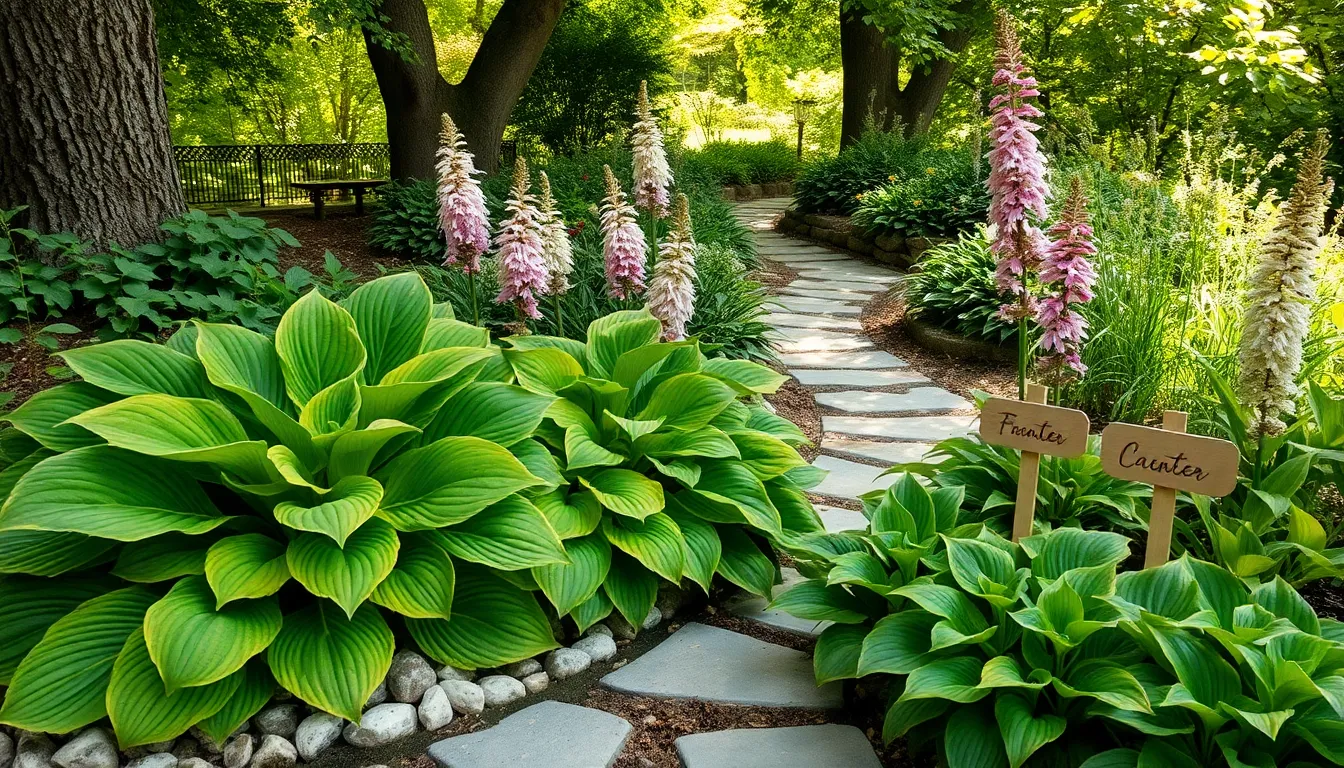Creating a garden in the tranquil embrace of shade can be both a delightful and rewarding endeavor, offering a serene sanctuary that bursts with life and color. Whether you’re a seasoned gardener or just starting to explore the wonders of plant care, understanding the unique dynamics of a shade garden will unlock new possibilities for cultivating beauty in those often overlooked corners of your yard.
Shade gardens are more than just a solution for those shadowy spots; they are an opportunity to bring a lush, verdant oasis to life with plants that thrive out of the direct sun. In this article, we’ll introduce you to 11 stunning shade-loving plants that can transform your garden into a captivating retreat, each offering its own unique charm and appeal.
As we journey through this selection, you’ll discover not only the aesthetic benefits of these plants but also practical tips on how to nurture them to their full potential. From vibrant foliage to delicate blooms, these plants will inspire you to embrace the shade and cultivate a garden that reflects your personal style and creativity. Join us as we explore the possibilities and guide you in creating a shade garden that is both beautiful and sustainable, regardless of your level of gardening expertise.
Understanding Shade Garden Basics
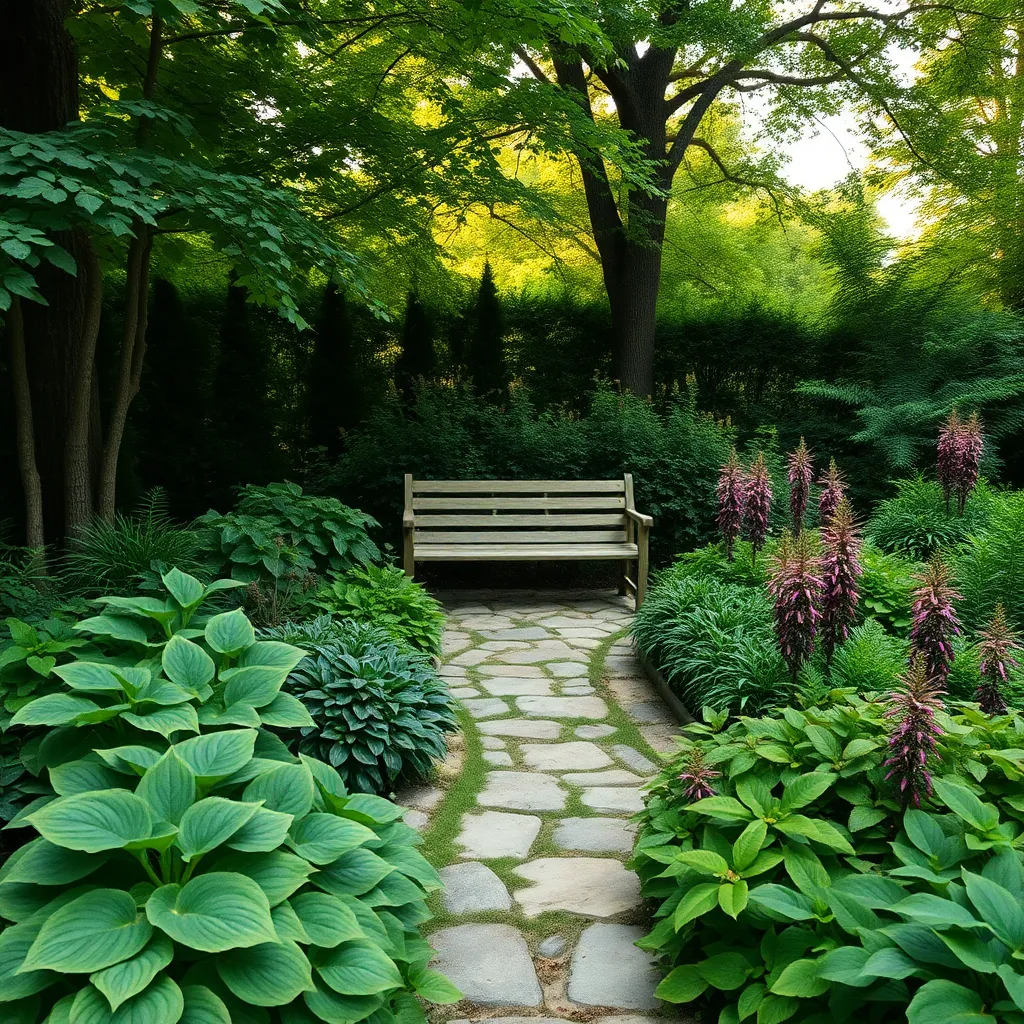
Creating a successful shade garden begins with understanding the type of shade your garden receives. Identify whether your area has full shade, partial shade, or dappled shade, as this will influence your plant choice and care.
In full shade areas, sunlight is minimal, often less than two hours per day, and plants like hostas and ferns thrive in these conditions. Partial shade areas receive about four to six hours of direct sunlight, making them suitable for plants that need a bit more light, such as astilbes and begonias.
Soil quality is crucial in a shade garden, as shaded areas often have poor soil due to tree roots or low organic matter. Improve soil fertility by adding organic compost or well-rotted manure, which enhances nutrient content and water retention capacity.
Watering needs are different in a shade garden, as shaded areas generally retain moisture longer than sunny spots. Monitor the soil moisture regularly; aim to keep it evenly moist but not waterlogged, especially for shade-loving plants like Japanese forest grass.
Top Picks for Shady Spots
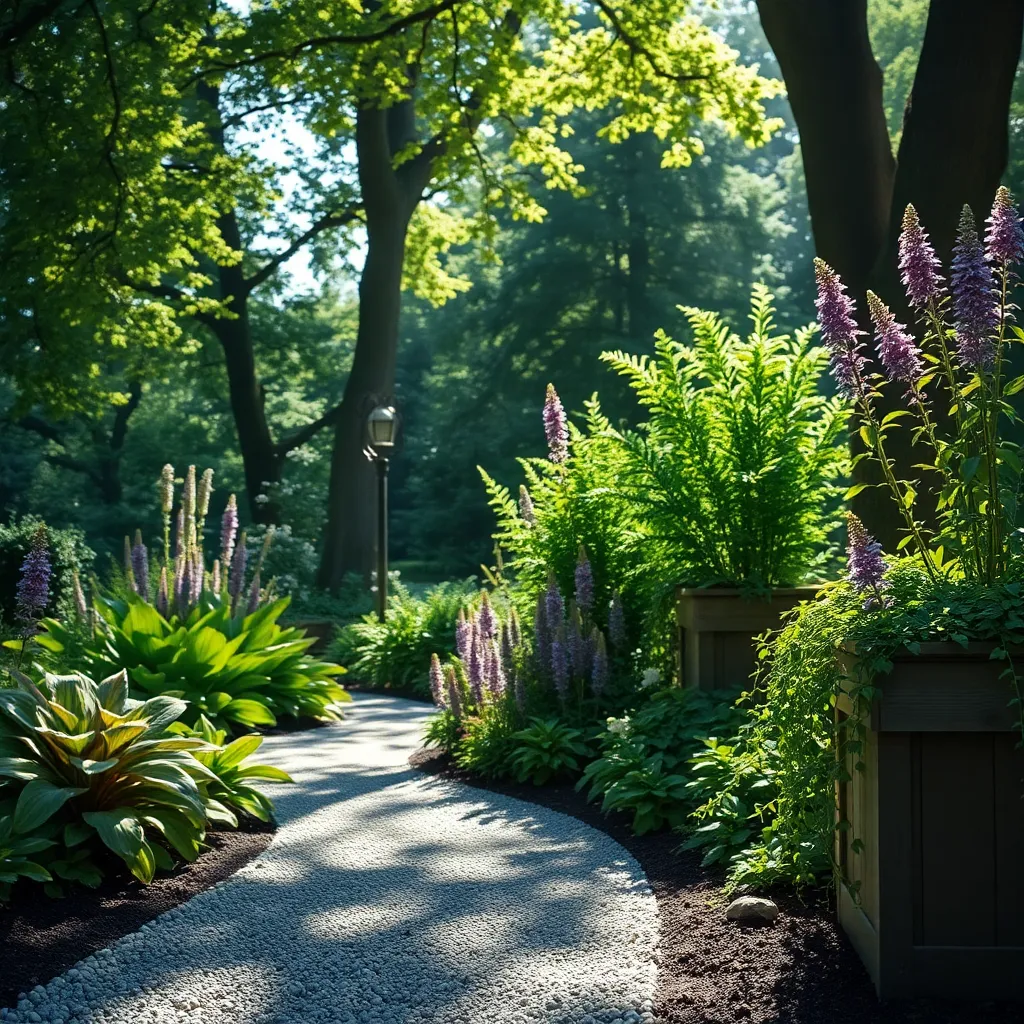
Creating a lush garden in a shady area is entirely possible with the right plant selection. Begin by choosing plants that thrive with less sunlight, such as hostas and ferns, which are known for their adaptability to low-light conditions.
Hostas are a fantastic choice for any shade garden, offering a variety of leaf colors and patterns. They prefer well-draining, moist soil and benefit from a layer of mulch to retain moisture and regulate soil temperature.
Consider incorporating ferns, which add texture and movement with their feathery fronds. These plants are drought-tolerant once established, but it’s crucial to keep their soil consistently moist, especially during dry spells.
For a pop of color, try planting astilbes, which bloom in vibrant shades and are perfect for brightening up shady spots. Astilbes thrive in rich, organic soil and require regular watering to keep their blooms lush and healthy.
Another excellent choice for shade gardens is the heuchera, known for its stunning foliage. These plants prefer a well-draining, slightly acidic soil and benefit from periodic feeding with a balanced fertilizer to enhance their colorful leaves.
Hosta: The Foliage Favorite
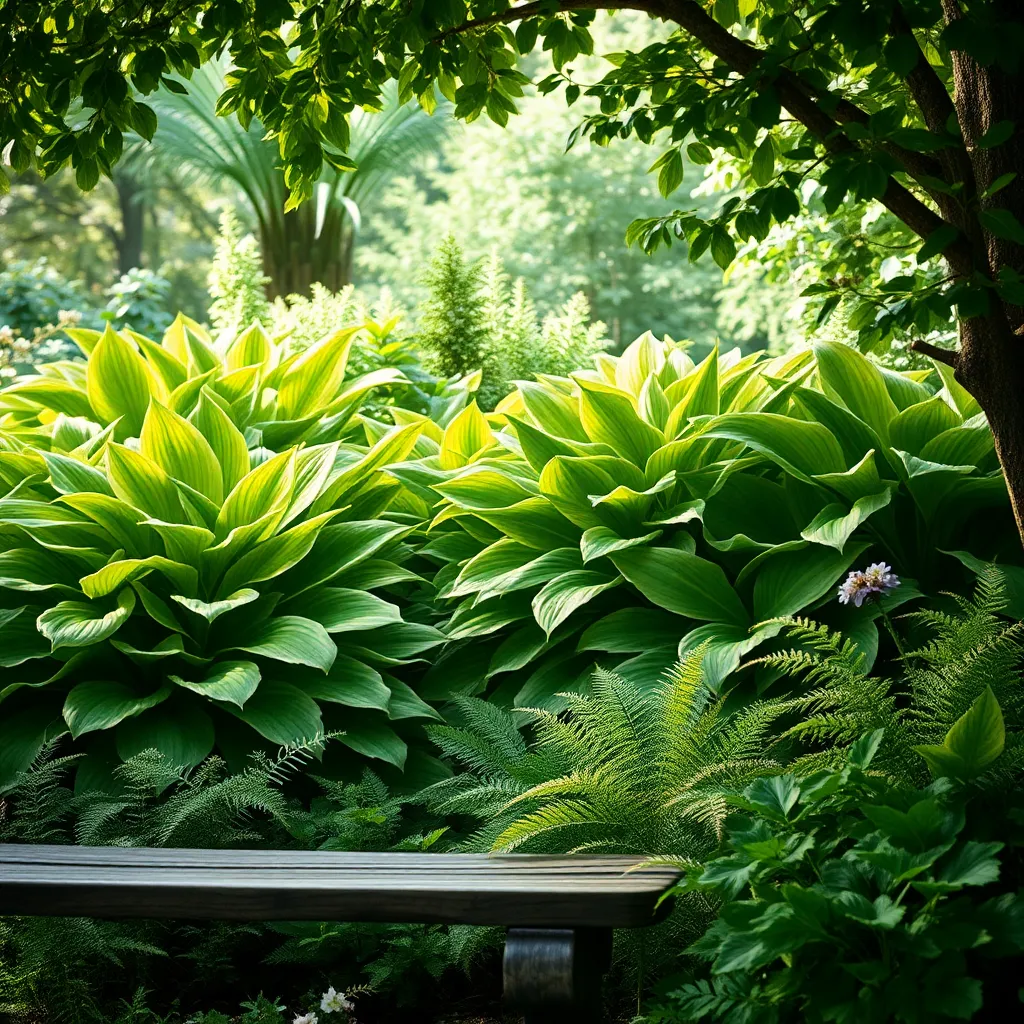
Hostas are a quintessential choice for adding lush, vibrant foliage to your shade garden. These perennial plants thrive in partial to full shade, making them perfect companions for darker corners of your landscape.
To ensure your hostas flourish, plant them in well-draining, nutrient-rich soil. Incorporate organic matter like compost to enhance soil quality and provide the necessary nutrients for robust growth.
Water hostas regularly, especially during dry spells, to maintain consistent soil moisture. However, avoid waterlogging, as this can lead to root rot; a good practice is to water deeply once a week if the weather is dry.
For those looking to take their hosta care up a notch, consider applying a balanced slow-release fertilizer in early spring as new growth begins. This will supply essential nutrients throughout the growing season, promoting lush and healthy foliage.
Ferns: Adding Textural Depth
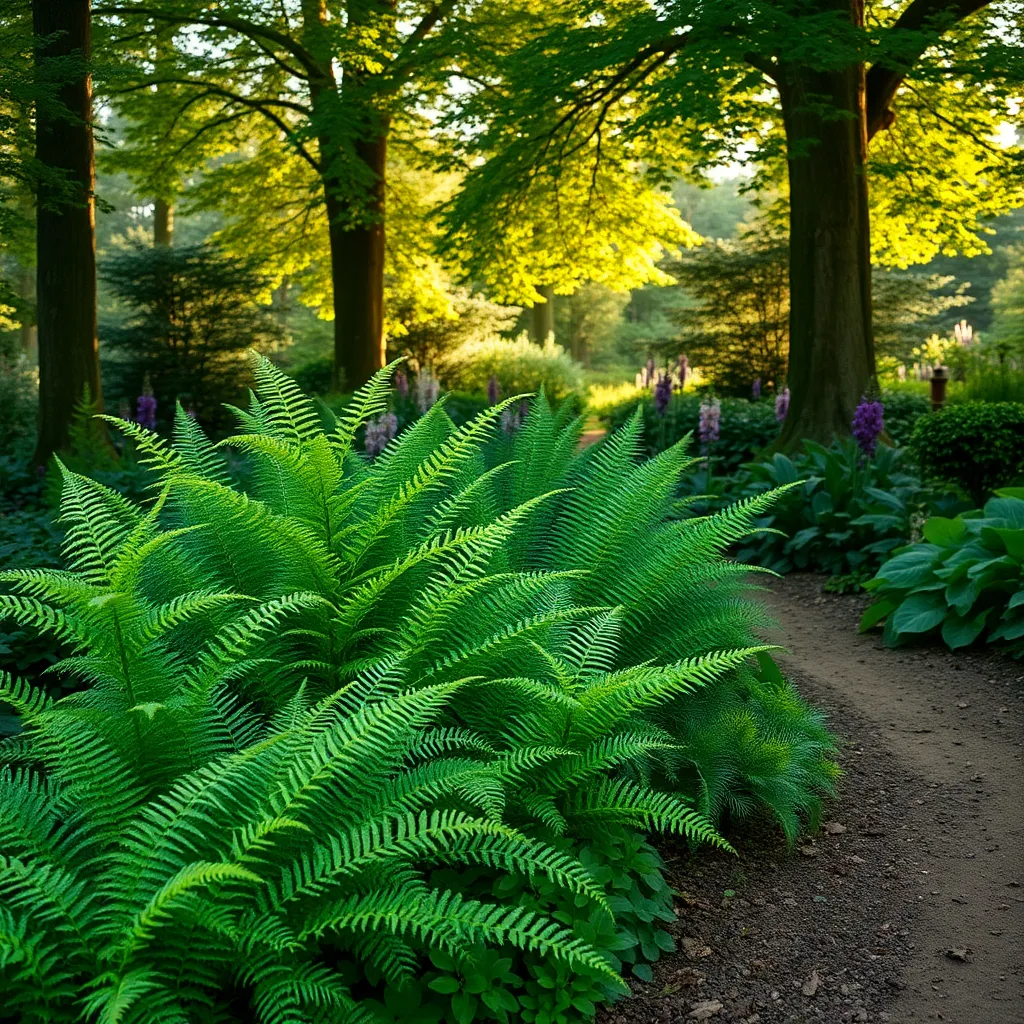
Ferns are an excellent choice for adding textural depth to your shade garden. Their delicate, feathery fronds create a soft contrast to the broad leaves of hostas and other shade-loving plants.
To successfully grow ferns, ensure they are planted in well-draining, rich soil. Amending the soil with organic matter like compost will provide the nutrients necessary for thriving fern growth.
Most ferns prefer consistent moisture, so regular watering is essential, especially during dry spells. However, avoid waterlogging by ensuring proper drainage, as too much water can lead to root rot.
For those looking to expand their fern collection, consider trying a few different varieties such as the Japanese Painted Fern for its striking coloration or the classic Boston Fern for its lush, full appearance. Both require similar care but can offer unique visual interest in your garden.
Astilbe: Bright Blooms in Shade
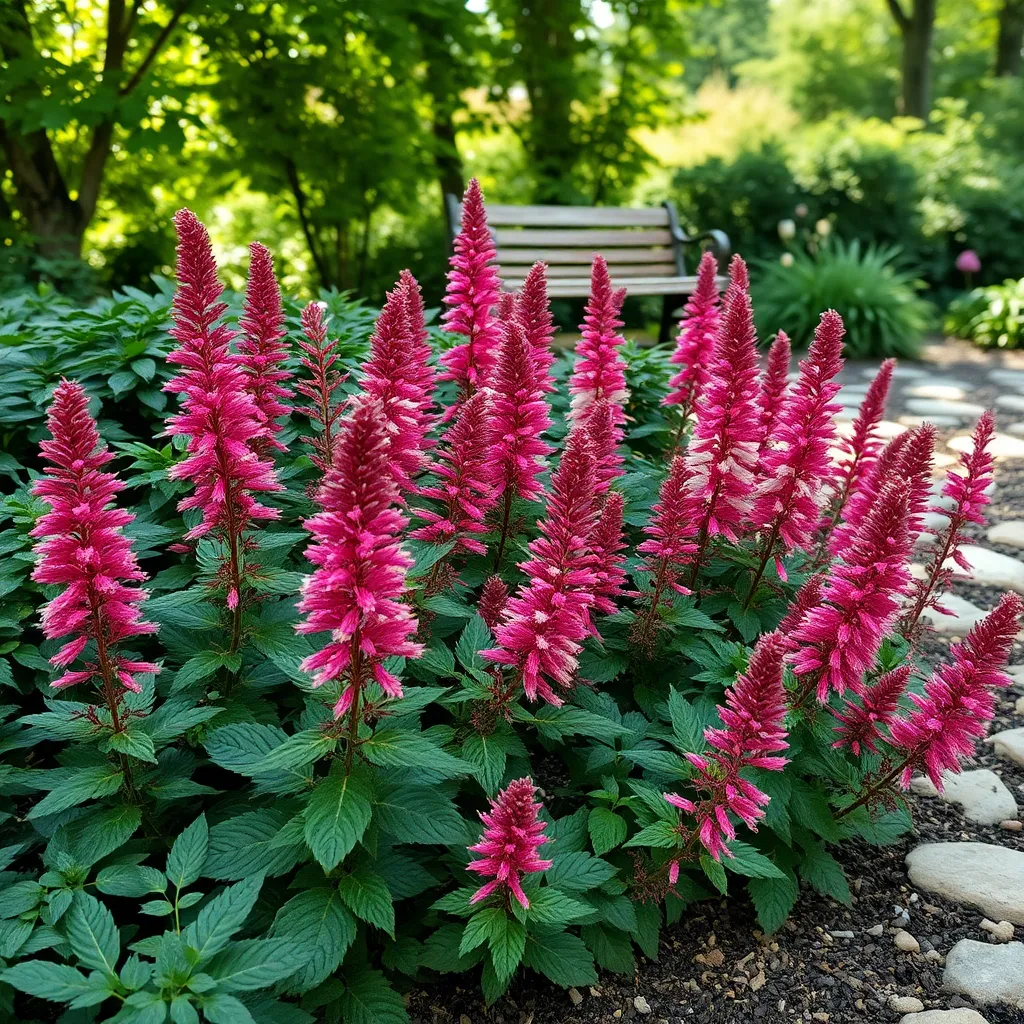
Astilbe is a fantastic choice for adding vibrant color to shaded areas of your garden. These hardy perennials produce feathery plumes in shades of pink, red, white, and purple, providing a bright contrast to the typical greenery of shade gardens.
When planting astilbe, it’s crucial to choose a location with partial to full shade, as they thrive in low-light conditions. Ensure the soil is consistently moist and rich in organic matter, as these conditions mimic their natural woodland habitat.
Watering astilbe regularly is key to their success, especially during dry spells. A layer of mulch can help retain moisture and keep the roots cool, which is particularly beneficial in warmer climates.
For best results, apply a balanced, slow-release fertilizer in the spring to promote vigorous growth and abundant blooms. Advanced gardeners might consider dividing the plants every three to four years to maintain their vigor and prevent overcrowding.
Heuchera: Colorful Leaf Varieties
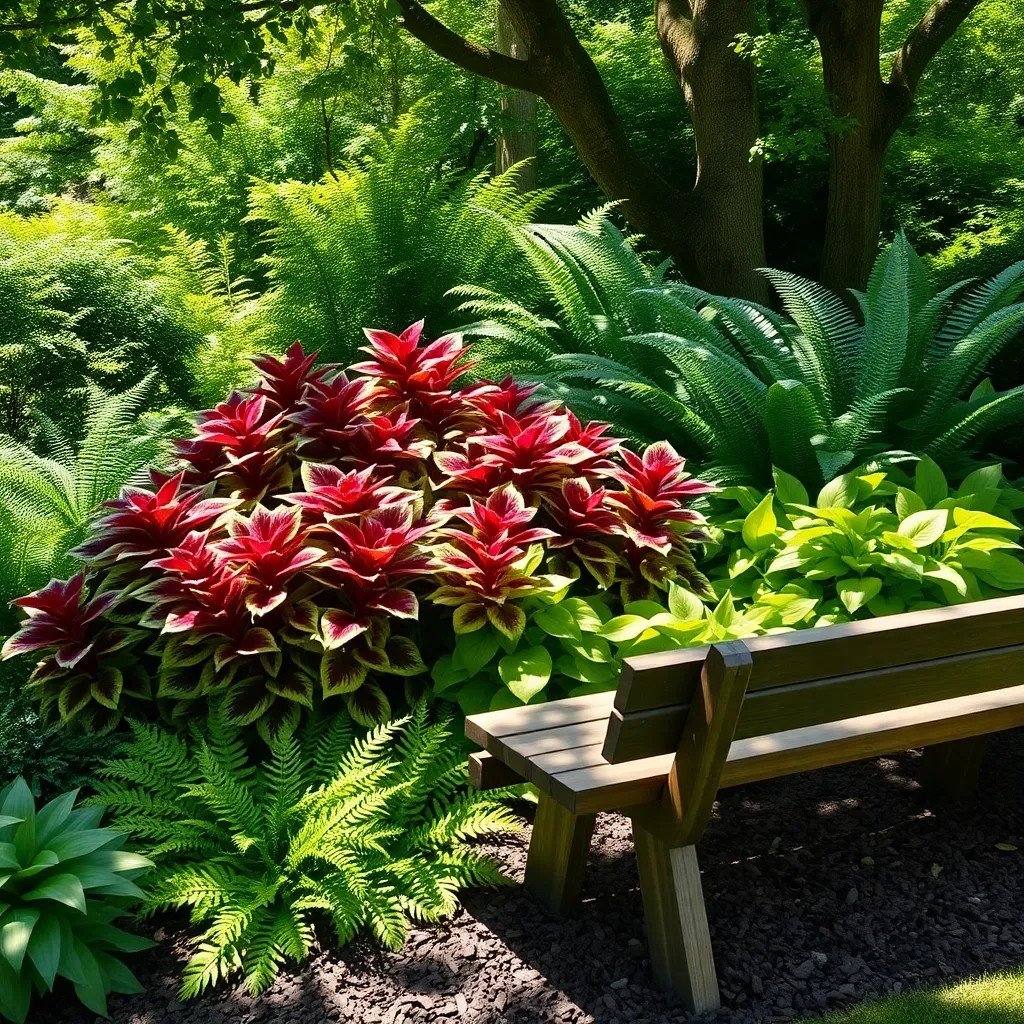
Heuchera, commonly known as coral bells, offers a stunning array of colorful foliage that thrives in shaded areas. With varieties showcasing hues from deep purples to vibrant lime greens, they add dramatic contrast to any shade garden.
Plant Heuchera in well-draining soil enriched with organic matter for optimal growth. While these perennials prefer partial shade, they can tolerate some morning sun, which helps intensify leaf color.
Regular watering is crucial, especially during dry spells, but avoid waterlogging as it can lead to root rot. An inch of water per week is sufficient, provided through rain or supplemental watering.
For gardeners looking to enhance their Heuchera’s leaf vibrancy, consider applying a balanced, slow-release fertilizer in early spring. Keep an eye out for pests like vine weevils and use organic pest control methods if necessary.
Coral Bells: Versatile Shade Perennials
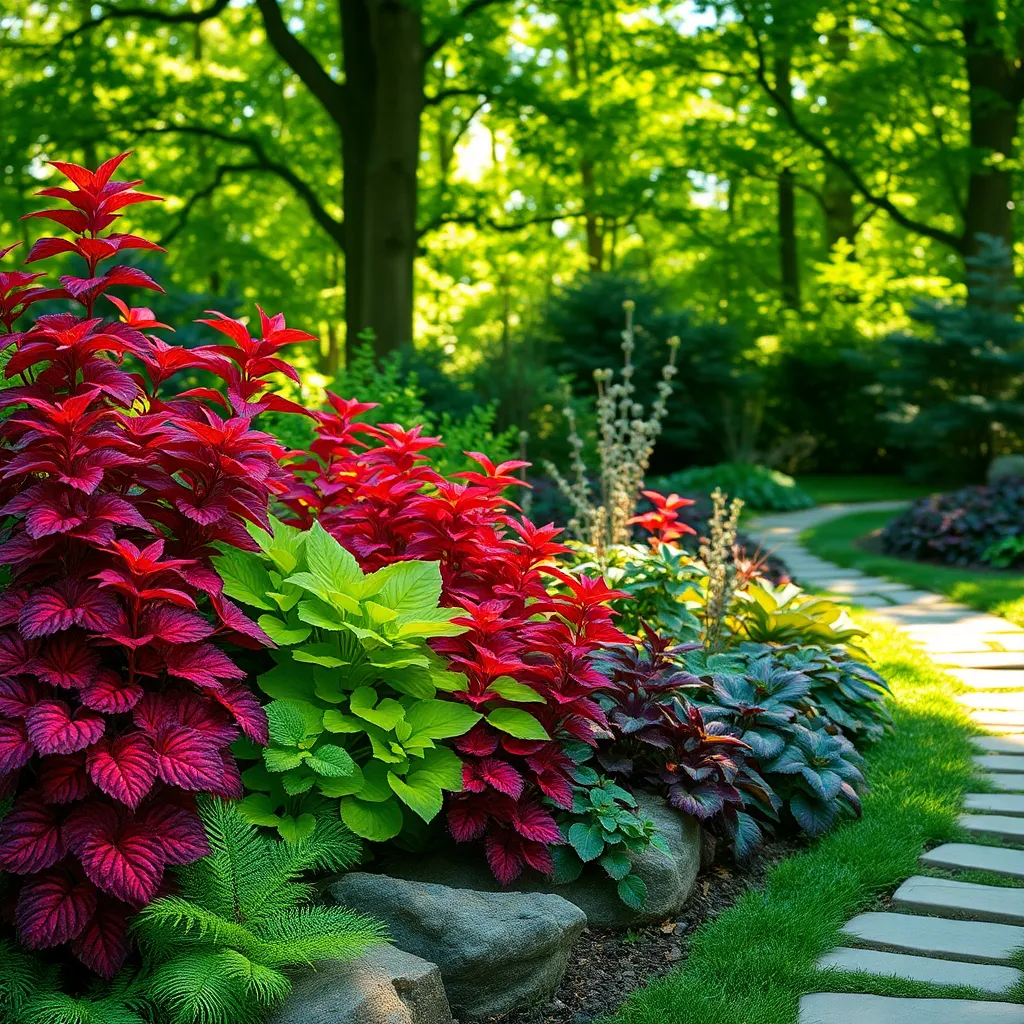
Coral Bells, or Heuchera, are versatile shade perennials known for their vibrant foliage and easy maintenance. These plants thrive in partial shade, making them ideal for brightening up darker corners of your garden.
To ensure optimal growth, plant Coral Bells in well-draining soil enriched with organic matter. Amending your soil with compost will provide nutrients and improve drainage, which is crucial for preventing root rot.
Regular watering is essential, especially during dry spells, but avoid overwatering as it can be detrimental. A layer of mulch around the plants helps retain moisture and keeps roots cool, particularly in warmer climates.
For gardeners looking to enhance their landscape, consider mixing different Heuchera varieties to create a tapestry of colors and textures. Deadheading spent flowers encourages more blooms and maintains the plant’s tidy appearance throughout the growing season.
Japanese Forest Grass: Elegant Groundcover
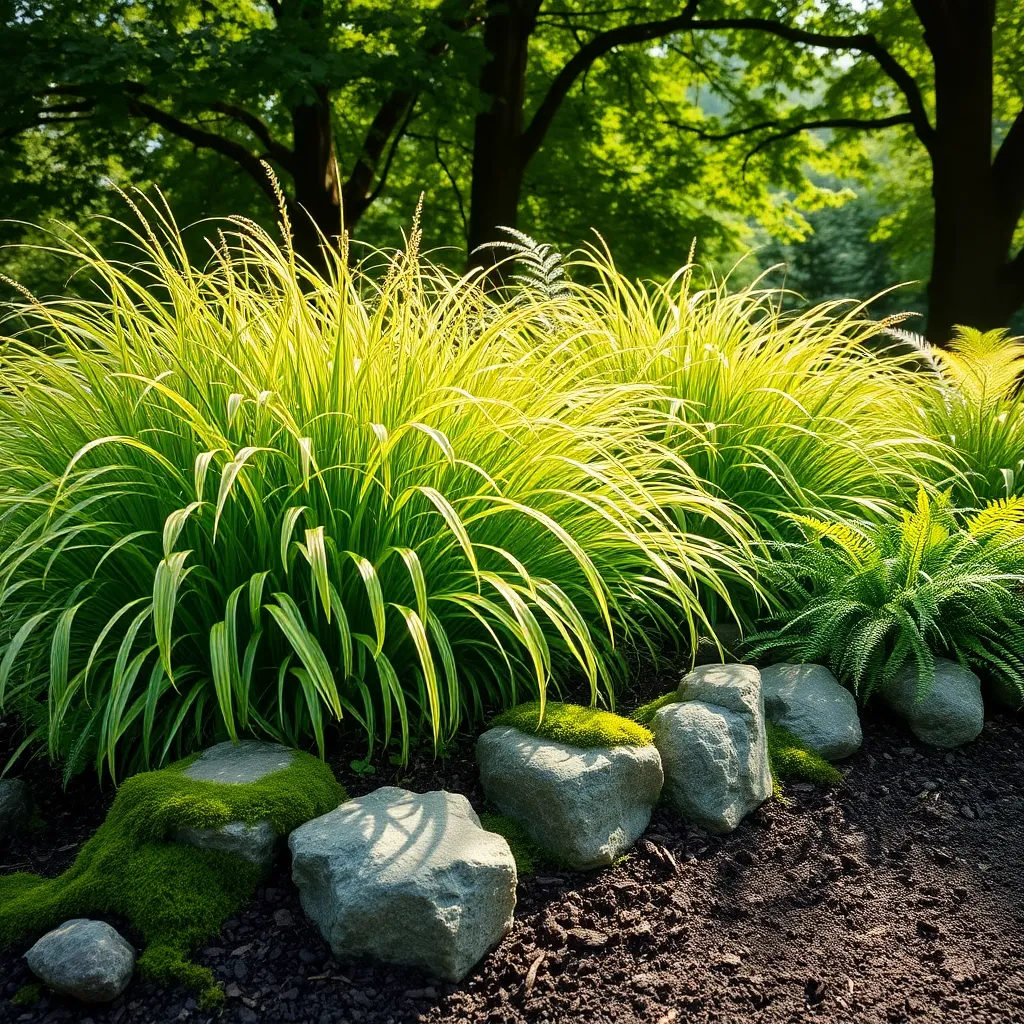
Japanese Forest Grass, known for its graceful arching leaves, is an excellent choice for adding texture to your shade garden. This elegant groundcover thrives in partial to full shade, making it perfect for areas where other plants might struggle.
To plant Japanese Forest Grass successfully, choose a location with well-drained, rich soil. Avoid overly dry or waterlogged areas, as these conditions can hinder its growth and lead to poor performance.
Water this plant regularly, especially during dry spells, to keep the soil consistently moist but not soggy. Mulching around the base can help retain moisture and keep the roots cool, which is particularly beneficial during hot summer months.
For those looking to add a pop of color, consider selecting varieties like ‘Aureola’, which features vibrant golden stripes. This cultivar not only brightens up shady spots but also pairs beautifully with other shade-loving plants like ferns and hostas.
Lungwort: Unique Spotted Leaves
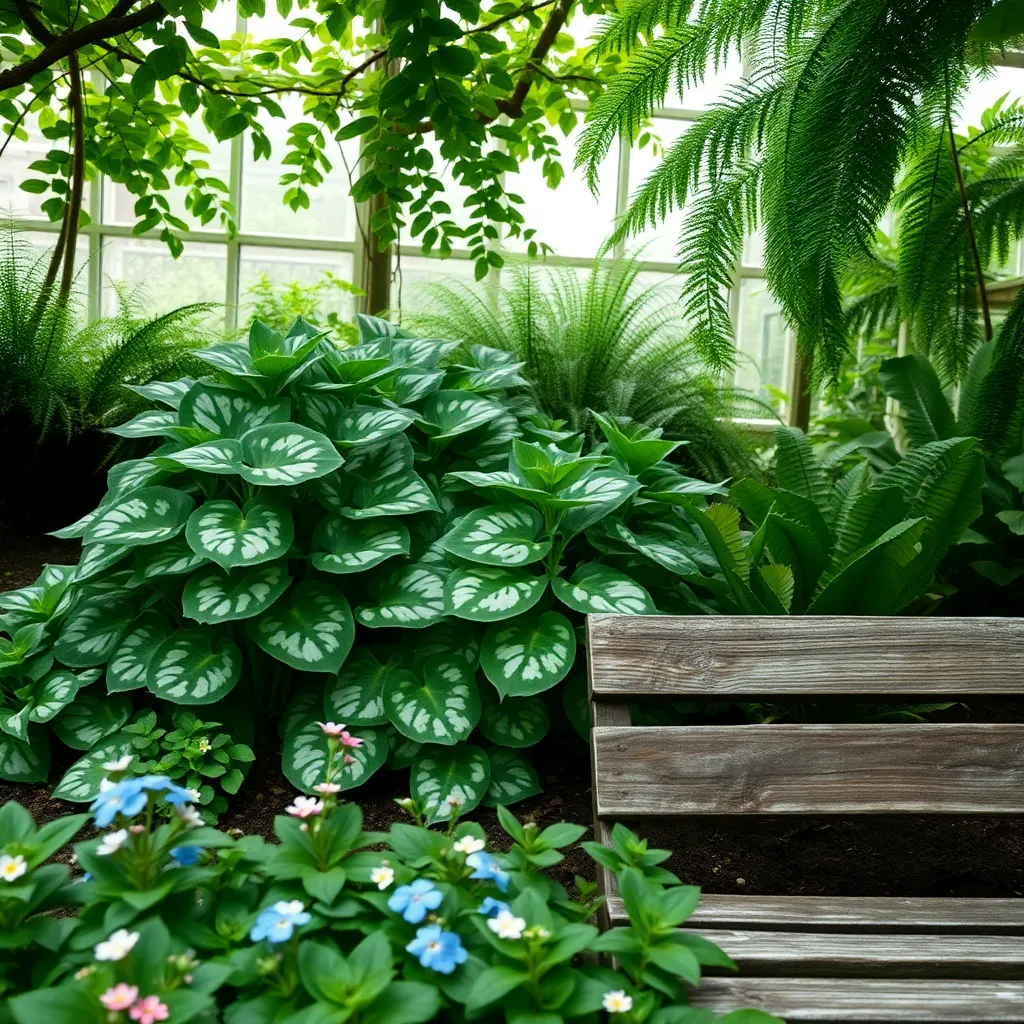
Lungwort, known for its unique spotted leaves, brings an enchanting touch to any shade garden. This perennial thrives in partial to full shade, making it an ideal choice for areas where sunlight is limited.
When planting lungwort, ensure the soil is rich in organic matter and retains moisture without becoming waterlogged. Regular watering is key, especially during dry spells, but be careful to avoid overwatering, which can lead to root rot.
For beginners, simply mulch around the plants to help retain moisture and suppress weeds. Advanced gardeners might consider dividing lungwort every few years in early spring to maintain its vigor and prevent overcrowding.
Avoid planting lungwort in areas where the soil remains soggy, as they prefer a well-draining environment. Additionally, keep in mind that lungwort is generally deer-resistant, making it a resilient choice for gardens troubled by wildlife.
Bleeding Heart: Delicate Shade Blooms
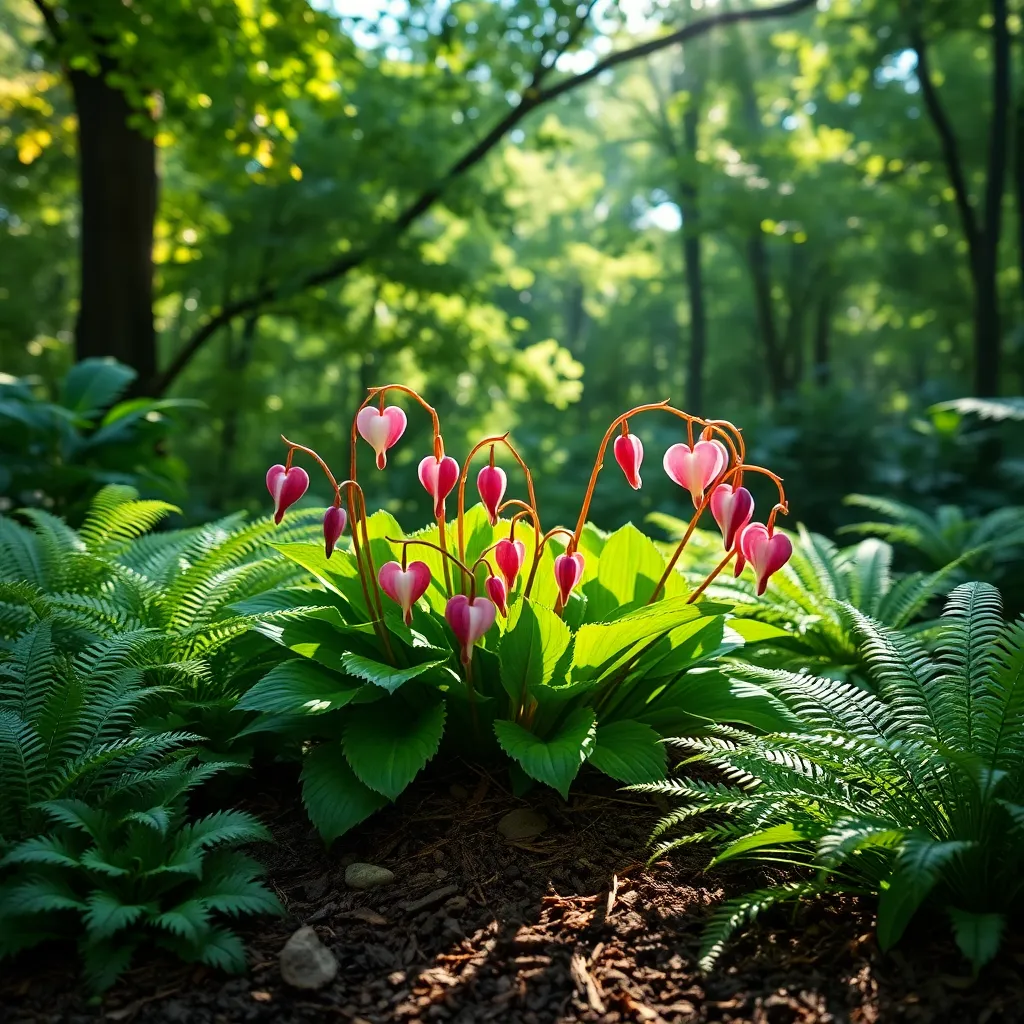
Bringing a touch of romance to your shade garden, the Bleeding Heart (Dicentra spectabilis) blooms with heart-shaped flowers that gracefully dangle from arching stems. Perfect for shaded areas, these plants thrive in rich, well-draining soil that’s consistently moist but not waterlogged.
To ensure optimal growth, plant Bleeding Hearts in a location where they receive morning sun and afternoon shade. Mulching around the base helps retain moisture and keeps the roots cool, which is vital for their health and vigor.
For a successful bloom, consider adding a layer of organic compost in early spring to feed the plants as they emerge. While Bleeding Hearts are generally low-maintenance, deadheading spent blooms can encourage a tidier appearance and potentially extend the blooming period.
Advanced gardeners might experiment with dividing mature plants every few years to promote vitality and increase their stock. Dividing should be done in early spring or fall, ensuring each division has a healthy root system and several shoots for the best chance of success.
Maintenance Tips for Shade Gardens
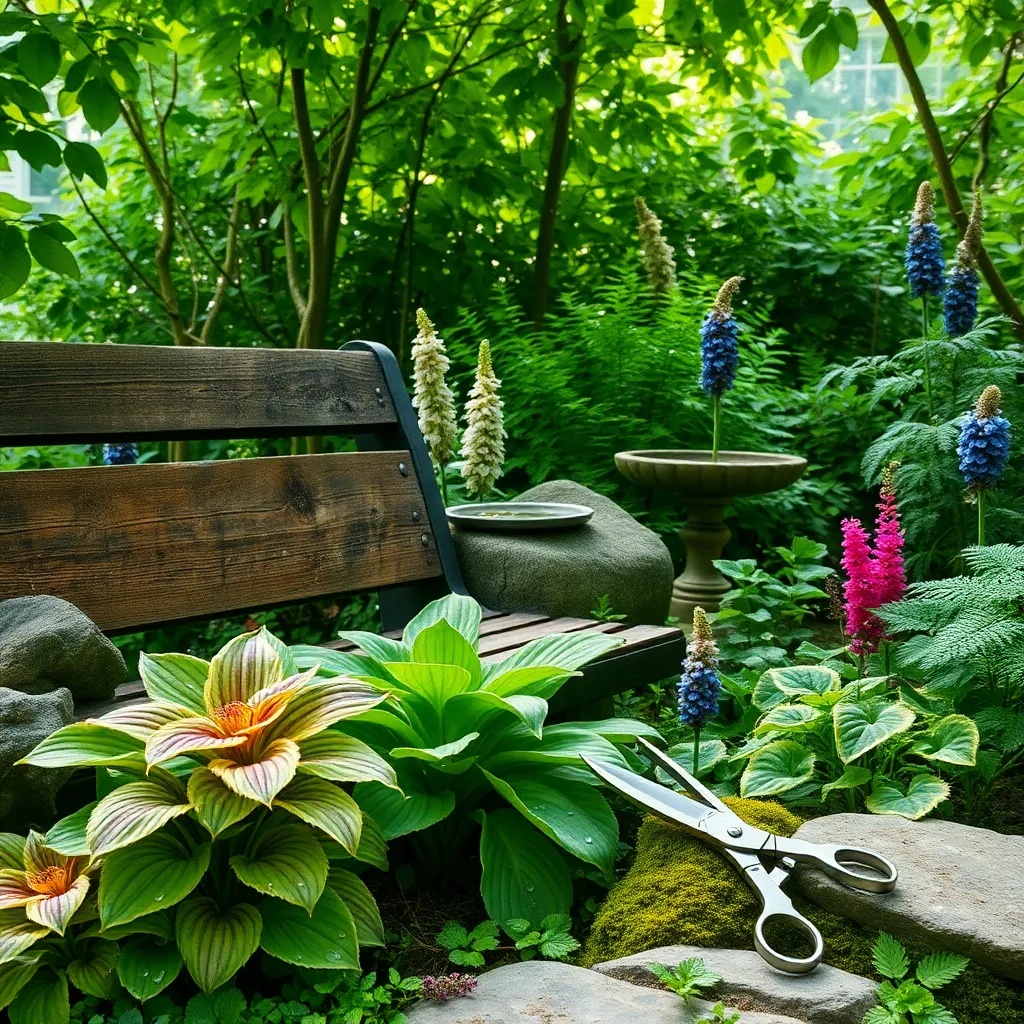
Shade gardens require a unique set of maintenance practices to thrive, as they often have different needs than sun-loving plants. Regular monitoring of soil moisture is crucial because shaded areas can retain moisture longer, reducing the need for frequent watering. However, be cautious about overwatering, which can lead to root rot in many shade plants.
Mulching is a key practice in shade gardens, helping to retain moisture and suppress weeds. Apply a 2-3 inch layer of organic mulch, such as shredded bark or leaf mold, around plants to maintain consistent soil temperatures and reduce evaporation.
Fertilizing shade plants requires a light touch, as over-fertilizing can lead to lush foliage at the expense of blooms. Use a balanced, slow-release fertilizer in early spring to support growth, and always follow the product’s instructions to avoid nutrient burn.
Pruning is essential for maintaining the health and appearance of shade gardens. Trim back dead or damaged foliage regularly to encourage healthy new growth and to prevent diseases from spreading. This practice also improves air circulation, which is especially important in shaded areas where humidity can be higher.
Consider the unique needs of each plant species in your shade garden. For example, Bleeding Hearts prefer rich, well-draining soil and benefit from a layer of compost in the spring to boost nutrients. Understanding these specific requirements can help each plant thrive, contributing to a lush and vibrant shade garden.
Conclusion: Growing Success with These Plants
As we explored the vibrant world of shade garden plants, we discovered the parallels between nurturing a thriving garden and cultivating a flourishing relationship. The 11 key concepts highlighted include the importance of patience, the beauty of diversity, the need for consistent care, and the resilience that comes from understanding and adapting to different needs. Just as each plant requires unique conditions to bloom, every relationship thrives on personalized attention and effort.
Now, take a moment to reflect on one relationship in your life. Identify what ‘shade plant’ it resembles and what it needs to flourish. Whether it’s more communication, trust, or shared experiences, commit to taking one small action today to nurture that bond.
Remember, relationships, like gardens, are ever-evolving. Bookmark this article as a handy guide to revisit whenever you seek inspiration or a reminder of the foundational principles that support beautiful, lasting connections. As you continue to cultivate these relationships, envision the success that awaits—a future filled with love, understanding, and shared growth. With each nurturing gesture, you’re not just planting seeds; you’re creating a legacy of love that will thrive for years to come.

